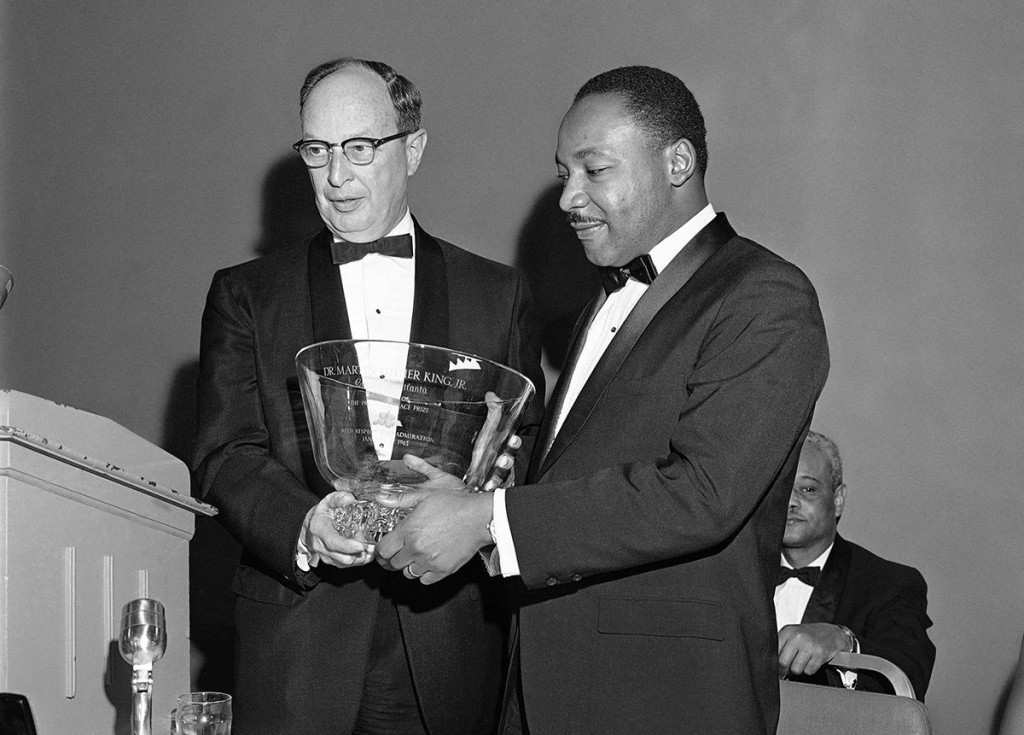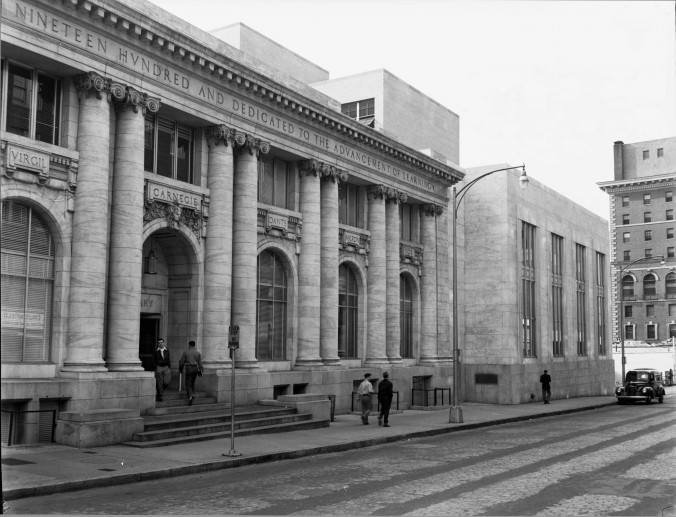
“African American integration leader Dr. Martin Luther King Jr., with Rabbi Jacob Rothschild in Atlanta. January 27, 1965.” AJCP552-028b. Atlanta Journal-Constitution Photographic Archive. Special Collections and Archives, Georgia State University Library
In January 27th of 1965, a huge dinner banquet was held in Dinkler Plaza Hotel (known as Hotel Ansley until 1953), located alongside Williams street in downtown Atlanta. The banquet was to congratulate and honor an Atlanta native who just won the Nobel Peace Prize in November 1964, the leader of the Civil Rights Movement, Dr. Martin Luther King Jr. The banquet was a huge success, and was attended by as many as 1,500 people of both black and white races. The New York Times next day reported that “the Dinkler Plaza Hotel was jammed far beyond comfortable capacity with Atlantans” who “stood and sang [We Shall Overcome], the most famous song of the civil rights movement”, and commented that the successful banquet was “symbolic of Atlanta’s attitude on race relations”.[1]
However, though it is not very well known, success of this banquet and the civil rights movement in general, were also closely tied to Coca-Cola, an Atlanta native company that became an international giant. The banquet to honor Dr. King was a symbolic incident which highlighted Coca-Cola Company’s effort to respond to a changing American society, and to the civil rights movement during the 1960’s and 1970’s. Continue reading




